Mercedes-Benz’s Dolby Atmos audio wins the 2023 Autoblog Technology of the Year award
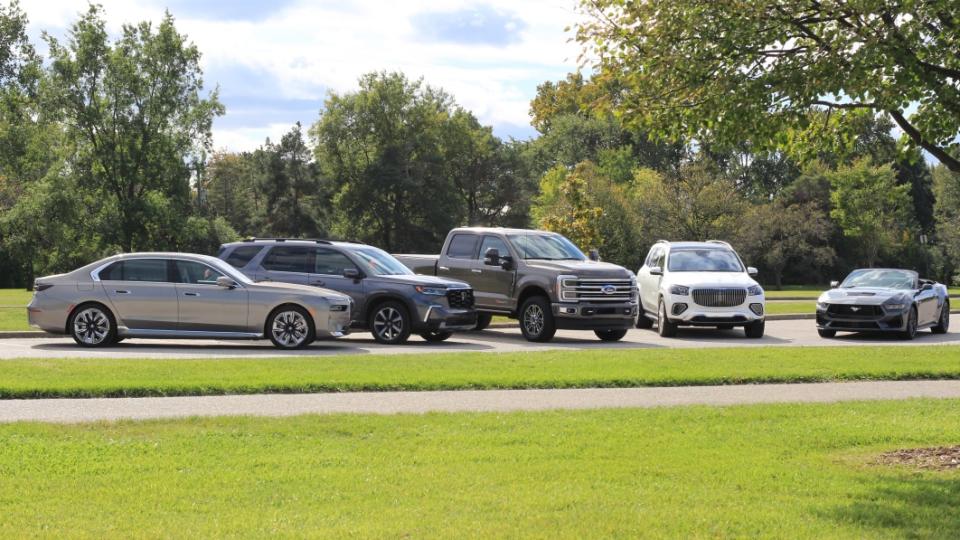
The same thought kept cropping up throughout the day of testing for the 2023 Autoblog Technology of the Year award: Mercedes’ audio system is something else. Mind you, it takes a lot to impress a room full of folks who are constantly testing the latest and greatest in automotive audio. From McIntosh to Panasonic and the countless Harman-owned brands in between, we’ve heard them all. But when we finally set to testing the Dolby Atmos-powered audio system now featured in several new Mercedes-Benz products, we knew there was something special on our hands.
Yes, a new-to-cars (but hardly new to home theater) audio software system integrated into a Mercedes-Benz wins the 2023 edition of Autoblog’s Technology of the Year award, and it did so against stiff competition. If you follow the latest happenings of in-home or theater audio, you’ve likely heard of Dolby Atmos before and maybe even seen the logo pop up on your TV screen as you’re firing up your most recent Netflix binge. The sound bar or speakers you use as a home theater setup might be Dolby Atmos-capable units, but up until recently, Atmos hasn’t been available in vehicles.
“The silky sound of the Mercedes-Benz Dolby Atmos system enhances the in-car experience and is a signpost for the future of in-car audio,” Autoblog Editor-in-Chief Greg Migliore said. “Mercedes and Dolby have created a system that makes listening to music deeply satisfying. More than just a flashy sound system in an expensive car, Mercedes Dolby Atmos is what music should sound like in cars of the future.”
To determine Technology of the Year, three main questions are asked and editors assign point values based on how well the technologies answer those questions. How significant is this tech? How well does it work? And lastly, what's its “Wow Factor?” Needless to say, the Dolby Atmos-powered Burmester audio system in the 2024 Mercedes-Maybach GLS 600 was eliciting “wows” at a high rate.
The Winner: Mercedes-Maybach GLS 600’s Dolby Atmos audio system
So, why should you care about a special audio software program tested on a vehicle that costs a lot more than many homes throughout the country? Per usual with Tech of the Year, one of the big factors for being declared a winner is how applicable the tech is to other vehicles within or outside of the carmaker bringing the tech to market. Vehicle-to-load (V2L) systems similar to Ford’s Pro Power Onboard, the winner from 2021, are available or will be available in a number of other new vehicles, and we’re exceedingly glad to see that. Dolby Atmos Spatial Audio has a similar potential to proliferate, as the same software is already being offered on many Mercedes models, and Lucid is similarly partnered with Dolby to offer the experience in its vehicles. Volvo and Lotus have partnerships to bring it to future vehicles, and we fully expect others to jump onboard the Atmos train. We’re not saying it’s going to be offered on the next Toyota Corolla, but there’s every opportunity to start upping the audio quality of cars everywhere with Dolby Atmos.
Describing how Dolby Atmos audio works is a rather long-winded exercise and may actually put you to sleep, but the quick and dirty is that it’s a shockingly better way to do surround sound. Your car may have a “surround sound” toggle, but it has nothing on a true Dolby Atmos setup. The key addition with Atmos is that it adds a height channel – home theater setups typically use up-firing speakers in soundbars to facilitate the audio experience – which allows artists to let you listen to their music in what Dolby calls a “three-dimensional sound field.” Tracks mixed for Dolby Atmos place sound elements within that field. Ultimately, that allows artists greater customization in how they mix their tracks and wish to present it to listeners. Universal Music Group is actively promoting Spatial Audio and partnering with Mercedes-Benz to bring tracks that carry the “Approved in a Mercedes-Benz” tagline. It’s no marketing joke or gimmick – the music is stupid-good.
The listening experience of all the meddling and customization work from artists and their recording studios will have you losing your mind at instrumentals or sounds that you didn’t even know existed or blended into the background in songs before. Not to sound too corny, but it feels like you’re sitting in the middle of a circle with the singer, their backup singers and an entire band around you. And on top of that, all those musicians are seemingly moving around the circle, bringing you new sounds from various corners throughout a song, always keeping you on your listening toes.
The 360-degree nature of what Dolby Atmos software is able to provide can’t be understated. You’ll hear the lyrics move from one corner to another and various instruments wash forward and overhead with such precision and clarity that it almost doesn’t feel real. Switch between a Spatial Audio track and the same version of that song without Dolby Atmos software applied, and you’ll hear the difference in depth instantly. Sure, maybe the music is still in a surround format, but that sense of being in the middle of a stage dissipates. Those instruments that were so easy to pick out before start to clash; the sheer amount of detail and clarity takes a step back, too. The difference is stark enough to have us skipping songs that don’t feature Spatial Audio programming for those that do, and we have a feeling you’ll be doing the same.
Queen’s “Bohemian Rhapsody” left our mouths agape at the absolute landscape of a sound production it is. For the Swifties out there, Taylor Swift’s massive catalog of albums are nearly all available in Atmos’ Spatial Audio, and it’s almost guaranteed that you’re going to gain an even greater appreciation for her music once you listen to it like this. Pink Floyd’s “The Dark Side of the Moon” is hard to touch for Dolby Atmos enjoyment, and the list goes on. You could spend hours – and we did – just idling and listening to the wide range of Spatial Audio tracks available out there.

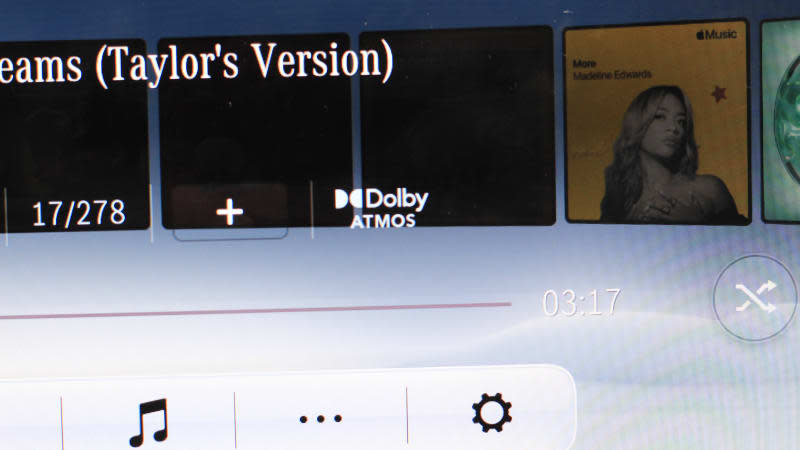
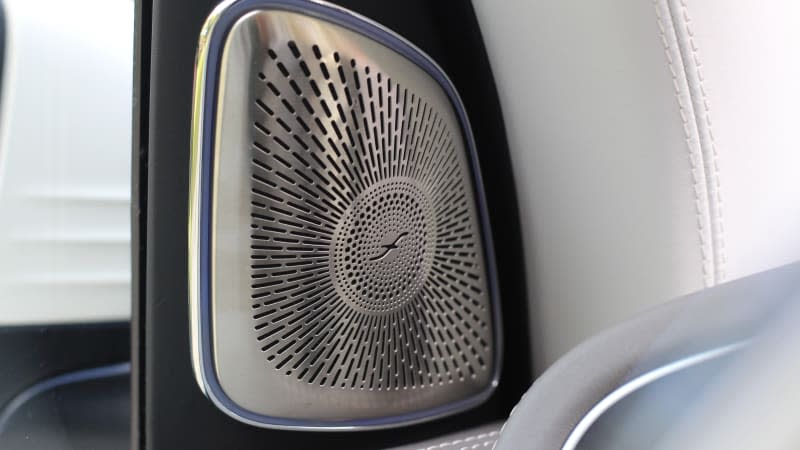
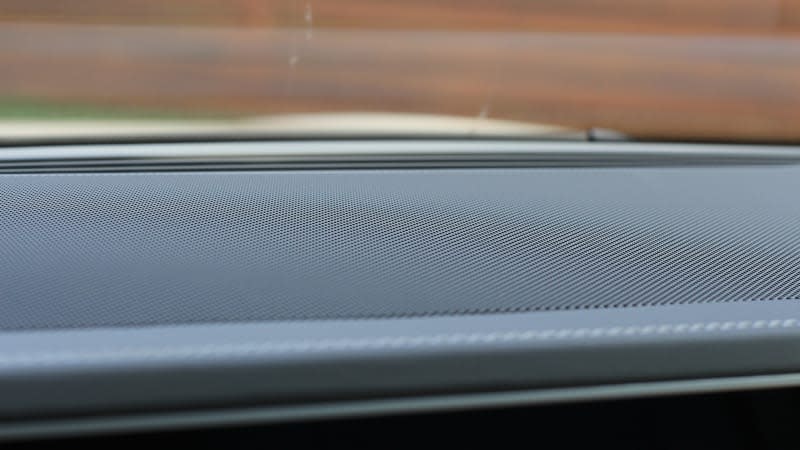
The actual availability of songs in Dolby Atmos Spatial Audio is one of the only “buts” to this whole operation, though at least it’s a small one. If you want to take advantage of this tech, you need to be listening via Apple Music with Dolby Atmos activated in the car, so you can’t just fire up a song on Spotify via Bluetooth and think that it’ll work. Only so many tracks have been engineered for it and are available in Dolby Atmos for the time being, but those figures are constantly increasing, and you can ensure that you get the right songs by just searching for “Spatial Audio” in the app. The interface is a touch clunky within the MBUX infotainment system, but it’s still functional and not a serious hindrance to listening.
And while it may not be the star of this software-driven show, the 27-speaker Burmester hardware in the Maybach GLS 600 is the perfect soundstage for Atmos-powered audio to show its full potential. Most home audio setups don’t have anywhere near as many speakers, but with this number of audio sources (and various placement locations for speakers), Dolby Atmos can come alive in a way that we’ve never heard in car audio before. We can only hope that more automakers make this a trend by integrating this special software into their vehicles.
The competition

Second Place: BMW 7 Series’ Theater Screen
This was an early favorite to win, and it’s easy to see why. A 31.3-inch 8K screen that swivels down from the ceiling in a dramatic show of opulence is about as fancy as it gets for new car tech in 2023. That it’s powered by Amazon Fire TV and a 5G data connection is just icing on the cake, and boy is it an enticing cake.
We liked how easy it was to operate the screen and its various apps, and the overly showy presentation is so good that we wouldn’t have it any other way, but the Theater Screen had its drawbacks that kept it from being a winner. For one, while the screen is utterly massive, its size and placement within the car make it a compromised experience. Video content is simply not sized to fill a screen with a 32:9 aspect ratio. You can choose to put the video playback in the center or canted to either side of the screen, but it’s still a bit odd to have such a vast area of emptiness while watching a show. It’s tough to love ergonomically, too. Instead of traditional headrest-mounted entertainment screens, the Theater Screen will force you to turn your head or body slightly toward the center of the vehicle to interact with it. Plus, when it’s being used, the driver cannot see out of the rear window, because the screen takes up the entire area and BMW doesn’t offer a digital rearview camera mirror as a backup.
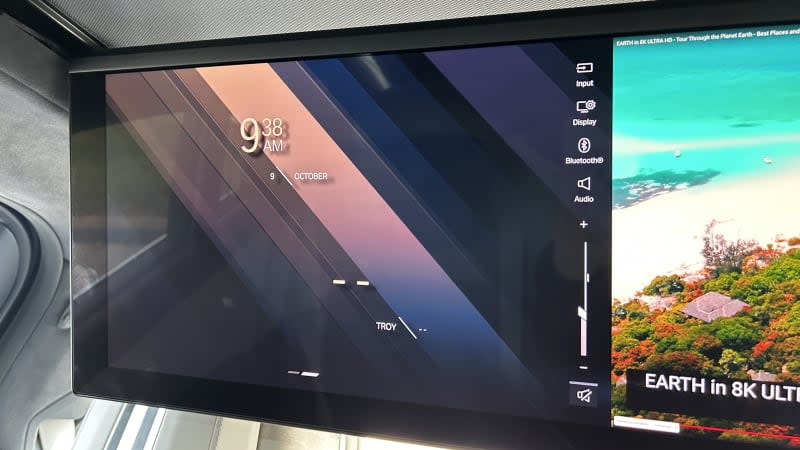
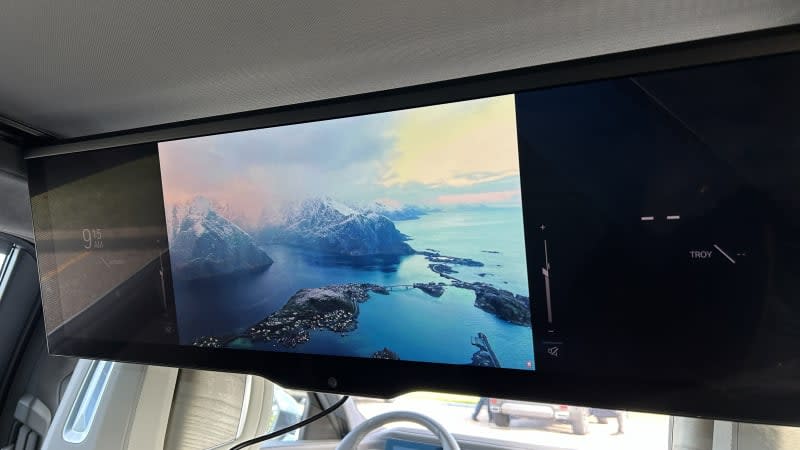
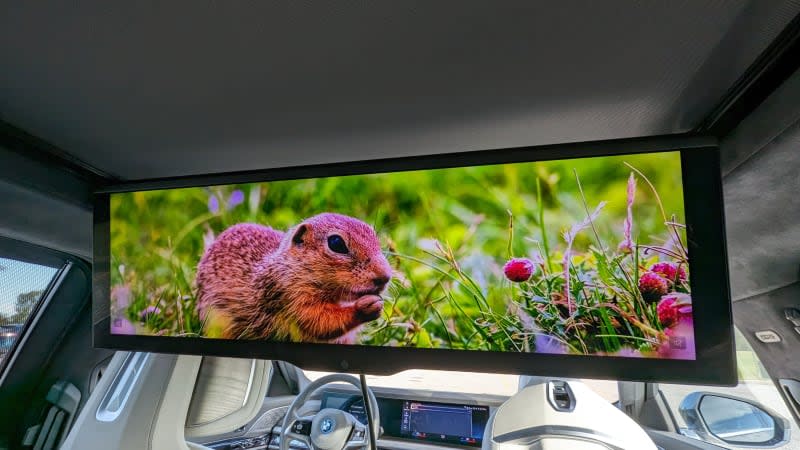

Associate Editor Byron Hurd’s experience with the Theater Screen is a perfect example of how much of a mixed bag it ended up being.
"My experience with BMW's Theater Screen wasn't exactly flawless, but it's clear that BMW put some thought into this setup,” Hurd writes. “The ability to tilt and slide the screen back and forth is welcome, especially if you can't quite eliminate incoming glare with the rear seat privacy shades alone. The controls are also simple to use, and the integration with the car's audio system is fantastic (make sure you fiddle with that bass setting!). Using external devices is a bit of a mixed bag; it took me some trial-and-error to get my MacBook synced up, and my personal Windows PC never played nice with the audio despite recognizing the display on the first try. That said, the input lag will make anything more than clicking through a PowerPoint presentation rough to do in real-time (forget about using it for gaming; the delay will kill you), but for kicking back to watch a stream, it's spectacular.”

 Yahoo Autos
Yahoo Autos 
